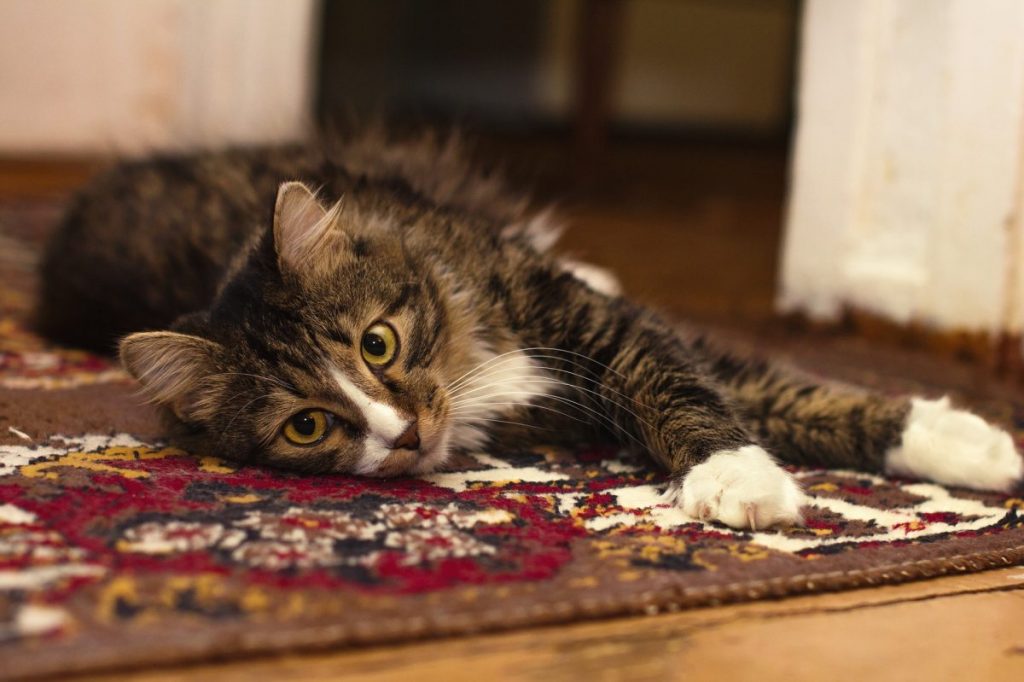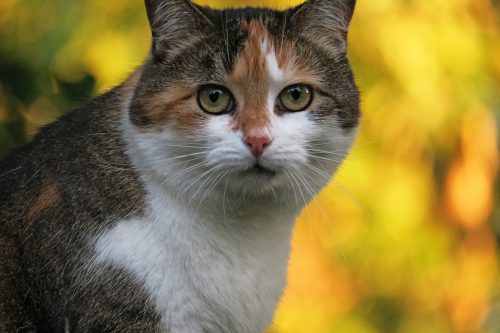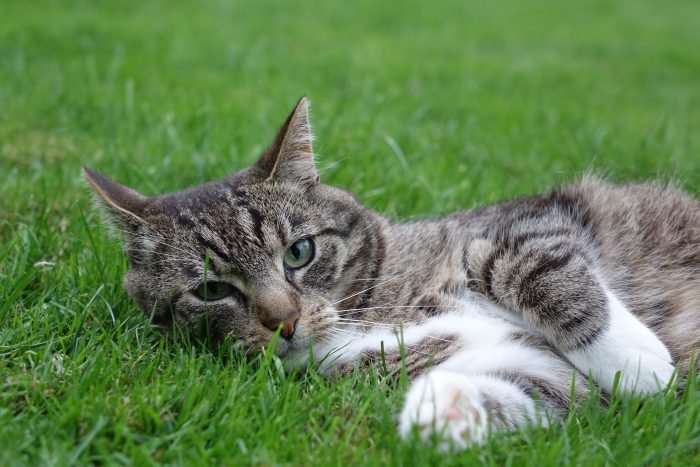Just like humans, cats can develop cataracts. Most people tend to think of cataracts as something that just comes along with age. This is true whether it’s with humans or cats.
However, cats do not develop cataracts solely due to age. Cataracts can develop due to a wide variety of reasons, from allergies, to disease, to mental disorders.
Cataracts are considered a degenerative disease that affects the lens of your cat’s eye and can impair his vision. If you notice areas of the lens that appear to be milky or cloudy looking when looking into your cat’s eyes, cataracts could be the culprit.
In extremely severe instances, blindness can occur. When this happens, your cat’s eye (or eyes) may develop what looks like a thick, opaque, grey/white film over the entire lens. Complete blindness is rare, however. More often, you’ll notice that your cat is behaving a little out of the norm as they suffer from increasing loss or impairment of vision.
Depending on the cause, cataracts can develop quickly or slowly. Often feline cataracts are a secondary condition, related to something else. Usually that something triggers inflammation in the eye. A cat that has suffered trauma, for instance, or contracts a viral or bacterial infection can be susceptible to cataracts, as well as cats that were fed a poor diet as kittens.
Signs of Cataracts in Cats
A cataract deposits a thick, milky looking layer over the lens of the eye. This layer may look white, grey, or blue in color, and your cat’s eyes may water more than normal.
- Sometimes your cat may experience clumsiness, or a newly developed aversion to high places. This is because those high places require climbing or jumping, and your cat isn’t as steady on their feet as usual.
- A cat with cataracts may experience uncertain footing, and even misjudge distances or jumps they normally make every day with no problems.
- They may trip over their own feet, or even bump into things like walls and furniture in an almost drunken manner. Most of the time cats are quite sure-footed, so when you see them behaving this way, it’s a cause for concern.
- Cats that are developing cataracts may have trouble finding their litter box, and even their food and water bowl. They may also have trouble recognizing you or other family members they are usually very close to.
- Cats that seem to be meowing a lot, or meowing in an abnormal manner could be suffering from cataracts.
- Cats can also show signs of anxiety and stress when they suffer from cataracts, simply because their vision isn’t working normally and it’s unsettling. Think about how you would feel with impaired vision, and you can get a better idea of how your cat may be feeling. It’s scary when you can’t see as well as you normally would, especially if the cataract onset is sudden.
Causes of Cataracts in Cats
There are a wide range of underlying causes when it comes to cataracts in cats, and the truth is, sometimes an underlying cause may never be found.
That said, here are a few of the more commonly known causes:
- High blood pressure
- Diabetes
- Trauma
- Genetic predispositions
- Exposure to toxins
- Lens luxation
- Kitten malnutrition
- Aging
- Electric shock
- Inflammation
- Inability to metabolize certain chemicals and proteins
What to Do if You Suspect Your Cat has Cataracts
See your vet as soon as possible, to nail down a diagnosis, and find out what the underlying cause is, if you can. You may even need to take your feline friend to see a veterinary ophthalmologist for specialized care and treatment.
Your vet may decide to administer eye drops to help control any inflammation, and in some cases, your vet may recommend surgery to remove the cataract, provided your cat is a healthy candidate for the procedure. If an underlying cause can be found, your vet will prescribe treatment for that as well.
Prevention of Cataracts in Cats
While you really can’t prevent cataracts, you can make your cat’s health and care a priority and engage in regular exams that also include eye exams. Keep your cat up-to-date on needed vaccines, and always strive to create and provide an environment that is safe for your cat to explore and play in.
One of the leading causes of cataracts in felines is trauma and injury. Often these wounds are inflicted by other cats, so unless they are already tight pals, it is wise to keep your cat away from other cats whenever possible.
Finally, don’t be discouraged. Cats are amazingly resilient and adaptable, and even with cataracts and vision impairment can lead a long, fulfilled life with loving humans.






